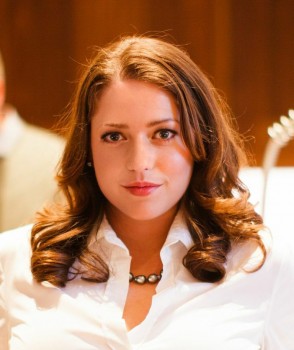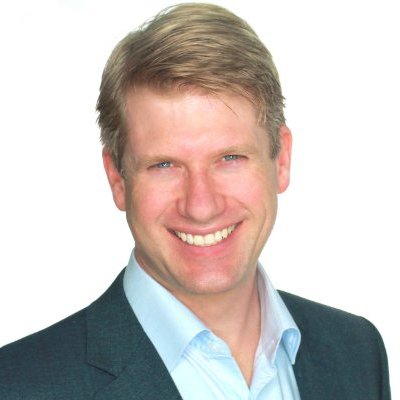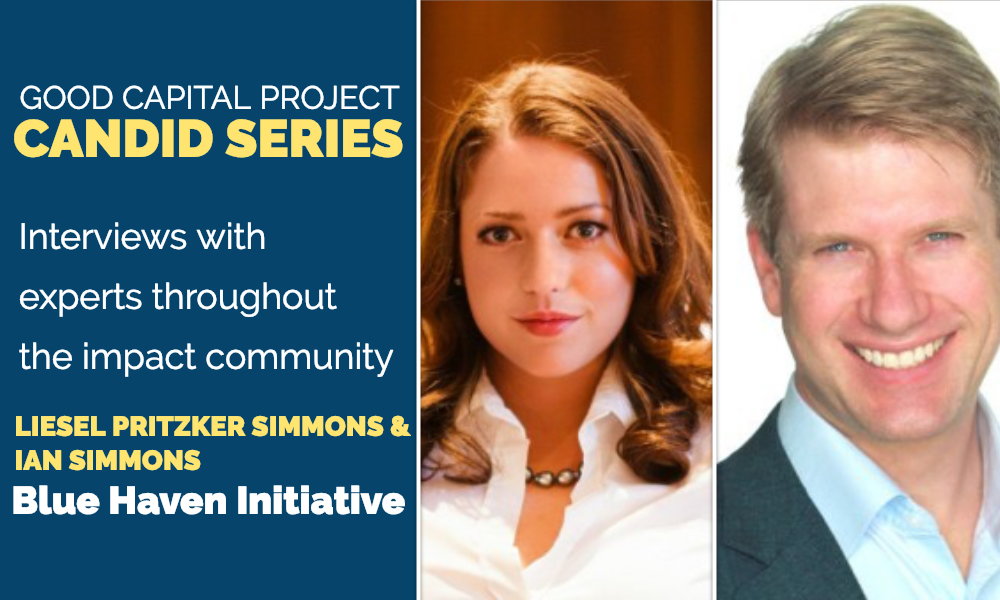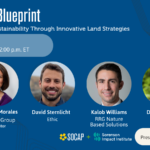
Good Capital Project: What are each of your journeys to impact?
Liesel Pritzker Simmons: I inherited family assets that were traditionally invested in a fairly liquid portfolio. As I became more interested in international development and philanthropy, I wanted to find out how to align my investment portfolio with these interests. I asked my financial advisors about having a bigger impact. I was surprised by their answer—they simply suggested giving more money away.

Luckily, this happened when leaders in finance were asking the same questions in a more public setting. After a bit of self-education, I realized what I was looking for was called impact investing. At the time, my current firm and team were not equipped to serve a client like me. I was looking for different products and fund strategies with measurable social impact in addition to my targeted financial returns. I decided to switch financial advisors, find a team to help recast my portfolio looking across asset classes, and figure out how to maintain financial performance while being thoughtful about the social and environmental impacts of those investments.
Ian Simmons: My family has been involved in running businesses since the 19th century. We always took pride in businesses with a positive mission, whether it was building universities or creating infrastructure to lower prices for farmers. Through my family’s history, I saw how investments with a positive mission could achieve market-rate returns or beat the market.
When I became responsible for assets, I instituted screening and ensured we were involved in direct investments with a positive mission. We have the opportunity to demonstrate it is possible to build an entire portfolio that advances social goals across fund categories.
GCP: It sounds like both of you took a very hands-on approach early on.
IS: Liesel and I had conversations early on about how resources can be used to create social change. We encountered situations where there wasn’t enough accountability around how money was being used once invested. Our advisor provided a general explanation, but wouldn’t actually know what was happening underneath the fund.
When we took a deeper look, we found companies doing terrific things and then companies selling armored vehicles to countries committing genocide. So, understanding the importance of clients and investors asking what their money is doing is sound fiduciary practice. We need to know about the underlying businesses and the long-term risks associated with them. Fortunately, it’s becoming mainstream to analyze business risk in a more comprehensive way.
Both Liesel and I experienced the financial crisis as a coming to terms, realizing there are a lot of hidden risks in people’s portfolios they didn’t know about, and if people understood them better, we may have had a more resilient economy. Asking what the money is doing is a very productive question and leads to stronger portfolios.
GCP: This plays into the growing understanding that every investment has an impact. How has building a portfolio with more intentionality influenced your view of traditional philanthropy?
LPS: It’s difficult to keep playing on the argument that having a negative impact with your investment portfolio will somehow be undone by the positive impact from your philanthropic portfolio. There’s more pressure to do the right thing the first time.
IS: And it’s not just about which companies are writing philanthropy checks. What matters is how their money is made and invested, and trying to raise those standards. Having a policy that invests in products that, when used properly, can kill people will usually create problems. If you’re not part of the solution, you’re part of them problem.
LPS: There are a lot of people doing incredible work, but their accomplishments are difficult to describe in a headline because it’s not as flashy as giving $100 million to fix Newark schools or $2 billion to end homelessness. It’s very enticing to make bold claims in business. The same is true in philanthropy.
There’s this unreasonable expectation that philanthropies can single-handedly solve social problems. That’s not how reality works. Everyone wants to talk about disruptive change in philanthropies. It actually takes many different bodies and entities (public, private and everything in between) working together over a long period of time in order to make changes. A lot of this work, however, does not get you on the cover of magazines.
It’s often difficult to get mainstream media to write about muni bonds, even though it’s incredibly important work. Innovation in impact is a complicated task that takes a long time and not very sexy to write about. That’s why there will continue to be big announcements in philanthropy. It gets people excited.
IS: The industry needs to be able to communicate what’s cool about this work. Using our muni bonds portfolio as an example, we can build schools and public transportation in a way that fits our risk return profile.
Being able to intelligently, and intentionally risk-substitute is another opportunity. The financial community is built purely on AUM, but clients are demanding higher standards. Businesses that can deliver value to the client and create portfolios that work harder and meet higher standards will be rewarded. This is becoming the new normal.
GCP: That brings up a great point. People love talking about “disruptive innovation,” but there are longstanding tools, like muni bonds, that can achieve the same balance of impact and financial returns. When do you look for traditional tools and when do you seek out innovation?
LPS: For the most part, traditional financial instruments are fine. However, I think it depends on the asset class. For example, the municipal bond market in the U.S. is fairly developed. We know what sanitation bonds issue at, how they look, and how they get graded. It’s a parsable market, so I’m not looking for disruptive innovations there. However, it’s great to hear about water sanitation using a new kind of osmosis but that’s for the municipality to figure out, not me as the investor.
I am looking for more innovation in our VC portfolios because innovation produces the returns we’re looking for, especially in tech-enabled and scalable solutions. Our VC portfolio focuses exclusively on sub-Saharan Africa. Over the years, we learned not to focus so much on the technology. We focus heavily on execution because being able to deliver the tech will make or break a company in that part of the world. Even in our more disruptive portfolios we tend to look at fairly boring business principles because those are what will make or break the company.
GCP: Are there any specific ventures that embody your vision of social entrepreneurship or the right approach to innovation?
LPS: One to highlight that has been expanding quickly, but at a responsible rate, is PEG Africa. It is a solar home system finance and distribution company based in West Africa. The pay-as-you-go solar home system market has been around for a few years, but most companies in the sector have several different lines of business—manufacturing, logistics, sales, distribution, and financing. PEG was able to refine its business model by financing and distributing other people’s products because the industry grew just enough to allow it to do that. We’re not too focused on trying to build a better widget because we need to focus on the real impact—actually getting the widget to people and making sure it works.
GCP: Do you have specific interest areas that drive your investing or do you have a broader approach so long as there is a social impact justification for each allocation?
LPS: For much of our investment portfolio, we’re looking for great managers as opposed to particular themes in particular geographies. But there are products we think are more investable than others. For example, the last several years we’ve had a lot of exposure to renewable energy financing because there are many different project finance funds globally and in the US.
Broadly speaking, we are fairly sector agnostic. However we are very specific in our VC portfolio. Part of the rationale behind our focus on sub-Saharan Africa is because we’re familiar with the region, as is our team. We also chose this region because there were a number of different businesses popping up around this proliferation of mobile money, which is speeding up the tech revolution in the region. There also isn’t a ton of money there. As a medium-sized family office, the amount of money we are able to put in several deals in sub-Saharan Africa would get us half of one Series A round in the US. In terms of financial return and impact per dollar, we believe that geography will go a lot farther for us. Our VC portfolio is in-house but we run it like a fund, so we want to stay disciplined. In terms of other asset classes, we are much broader regarding sectors and themes we will entertain.
GCP: A recurring conversation we have is around the challenges of reallocating a portfolio to impact. Were there any structural challenges or other difficulties in making that transition?
LPS: We were pretty lucky hitting this sector at a good time. There were funds with track records on offer. The most difficult part when we started was finding the right team. We needed to find the right financial advisor who would work with us and understood our style. Advisors need to become more comfortable with using a broader array of tools to meet a client’s needs.
IS: We start off by determining our asset allocation by examining risk tolerance and capital needs. Then we work backwards to populate asset classes and sub-asset classes with investments that maximize financial returns and either generate social impact or align with our values.
Not everything we do is high impact, but we intend to get there. And we’re always looking for solutions. We don’t always find everything we’re looking for. Sometimes we have to wait and pursue something neutral until products meeting our standards come along.
Our approach is simple: avoid investing in the bad stuff and find opportunities for good stuff. The field is always evolving so it takes a commitment to being open to new opportunities. Impact investing is treated as novel, but most of it is traditional business strategies with more standards.
GCP: That brings us to how impact is communicated. Do you think the industry has limited itself by how it describes itself?
IS: I think there needs to be more focus on the strategy behind impact investing. Some of the impact investment community marginalizes itself avoiding this. Fundamentally, impact investing is just smart investing for the long term. This isn’t new, this is investing with higher standards. Always ask what the money is actually doing and be able to connect it to people’s lives.
It goes beyond how the industry describes itself. There are also issues with companies co-opting impact messaging for their own purposes. There is also a concern around companies claiming to be supportive of impact investing, when in reality they’re just supportive of a tiny portion of their portfolio. Some companies aren’t integrating impact investing to create a more resilient culture or a better economy, but to boost employee morale and attract new clients. Ultimately, the burden falls on us to identify authenticity.
LPS: I’m not so worried about greenwashing and impact washing because you have to look under the hood of every investment. If you do that, you won’t be duped by impact washing. If you only read the first sentence of every investment memo, then it will probably affect you. I believe people who are more concerned with headlines will be more prone to it but that’s not the population really making the change.
GCP: You mentioned it was difficult to find the right team. We’ve been interested in this intersection of impact and recruiting, particularly in big firms. How should larger firms be approaching or integrating team members interest in impact so we have a larger talent pool in impact?
IS: Large firms should start thinking about how they can benefit from using an integrated, holistic approach to impact throughout client, employee, and shareholder constituencies.
I think there has been some progress. Complaints about short term-ism are fair, but we’re seeing the largest banks in the world discussing long term policies that improve productivity for the company, economy, environment. The long-term approach is great because people are thinking about climate risk, education systems, and labor forces.
LPS: I would add this isn’t important to consider just for financial sustainability of your firm or client retention. If the business incentives don’t resonate, I can tell you with great confidence that if you hang out in any top business school in the world, this is the work the smartest people at those schools want to do. Just think about it in terms of talent recruitment and retention at your own firm. We have millennials coming out of these schools who want to do this work, so make it a priority line of business and they won’t create firms to put yours out of business.
GCP: That point dovetails into another reality the industry faces—the impending wealth transfer. What are your perspectives on how millennials—or anyone really—can leverage new wealth to affect real global change?
LPS: For the next generation coming into this, I would say to just get started. Don’t wait for everything to be perfectly constructed. Start making investments and see what you learn. In the same way investors constantly look under the hood of companies and investments, it’s helpful to look at what other investors have done to determine what’s good or not. I’m looking forward to this next generation being able to give us feedback and make us better investors. We’ve been doing this for awhile and think we learned a lot, but new entrants will push and challenge us. I’m looking forward to it.




